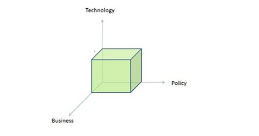A few facts which stand out about the ethanol industry today in the US.
- There are about 7 billion gallons of ethanol produced and consumed in the US, while total gasoline consumption is around 150 billion gallons a year. (ethanol represents 5% of total)
- There are currently about 6 million Flex Fuel Vehicles (FFVs) on the road out of a total of 230 million cars on US highways (3% of total)
- There are 1,000 E85 pumps in the US, out of a total of around 200,000. (0.5% of total)
- Most of the ethanol produced is consumed as E10
So there is an order of magnitude difference in the availability of E85 fuel stations relative to the availability of ethanol. Fuel stations are the “retail outlets” of the fuel industry, without them fuel doesn’t get to market. A true ethanol (or other non-fossil based fuel) economy will not develop until that happens.
It is not a chicken or egg problem anymore, there are enough cars on the road that can run on E85. The bottlenecks are more complicated and subtle – that the FFVs are owned by users who don’t know or don’t care that they can run on E85, that the FFVs are located in parts of the country which don’t have E85 pumps (for example, today there is not a single active E85 station in Massachusetts).
Today, nearly all of the ethanol produced is mixed with gasoline, to replace MTBE, and sold at regular fuel pumps (E10). Thus, in an ironic twist, today the primary buyers of ethanol are oil companies. E10 can run in a normal car, so the billions of gallons of ethanol produced today are effectively still being used within the oil economy.
Projections are that towards the end of next year, US production of ethanol will reach 10% of total consumption. Adrian went to a biotechnology conference in Illinois a few weeks ago. His view was that there is a lot of pessimism among participants about the ability of the US economy to absorb ethanol produced beyond that 10%. The prime reason for this is that E85 infrastructure has not been set up - transporation and pumps.
So what happens the day after 10% is reached. Can a normal car run on 15% ethanol? Yes. Unadjusted cars can run on E20 and potentially up to E30. What this means is that even if the E85 infrastructure is not set up by end of next year, the excess ethanol could potentially still be put to use.
Overview of E20/E30 and E85:

None of this will ever be relevant unless we can produce enough ethanol. Corn prices are already being affect by the current production of corn ethanol, so another way has to be developed to go beyond E10/E20.

No comments:
Post a Comment